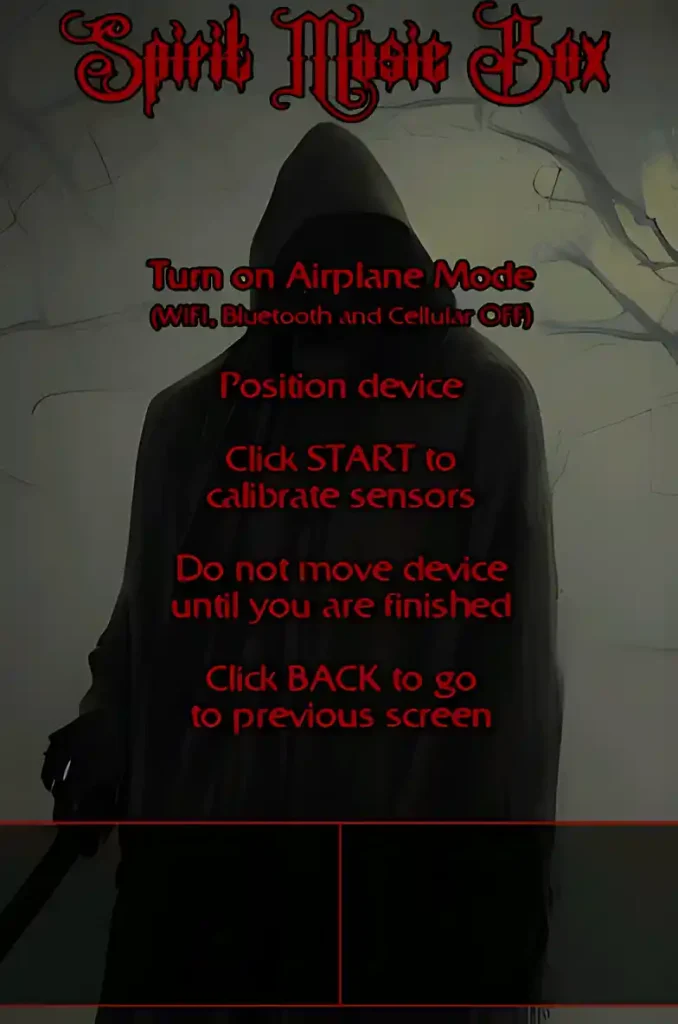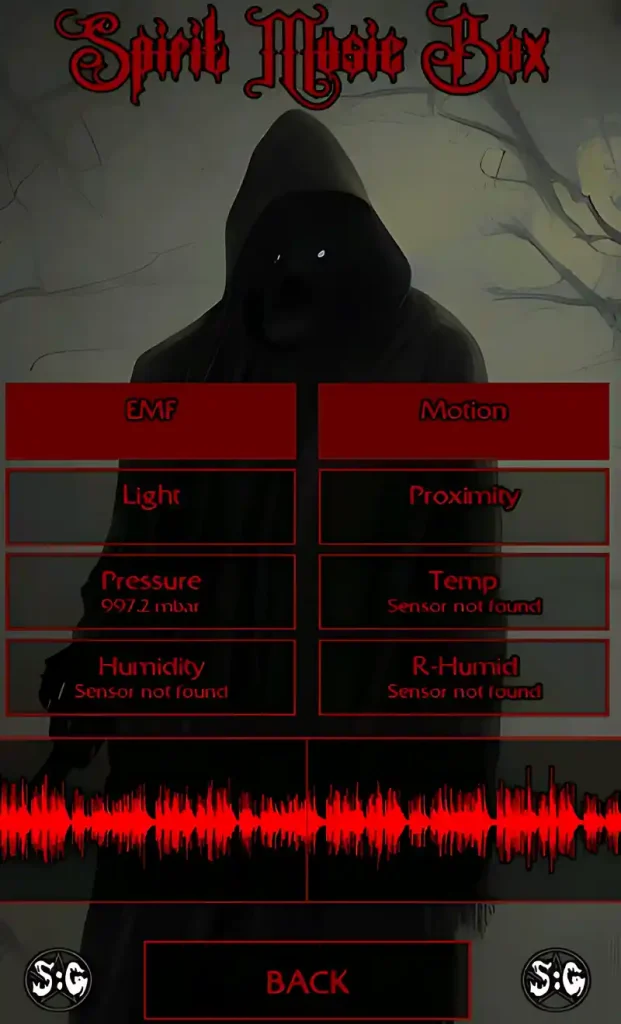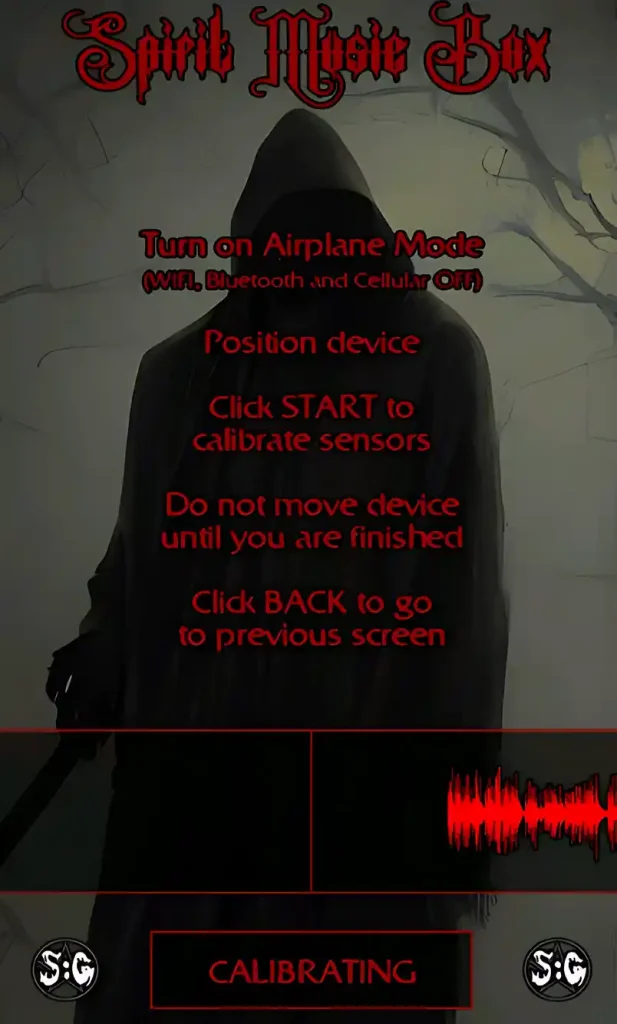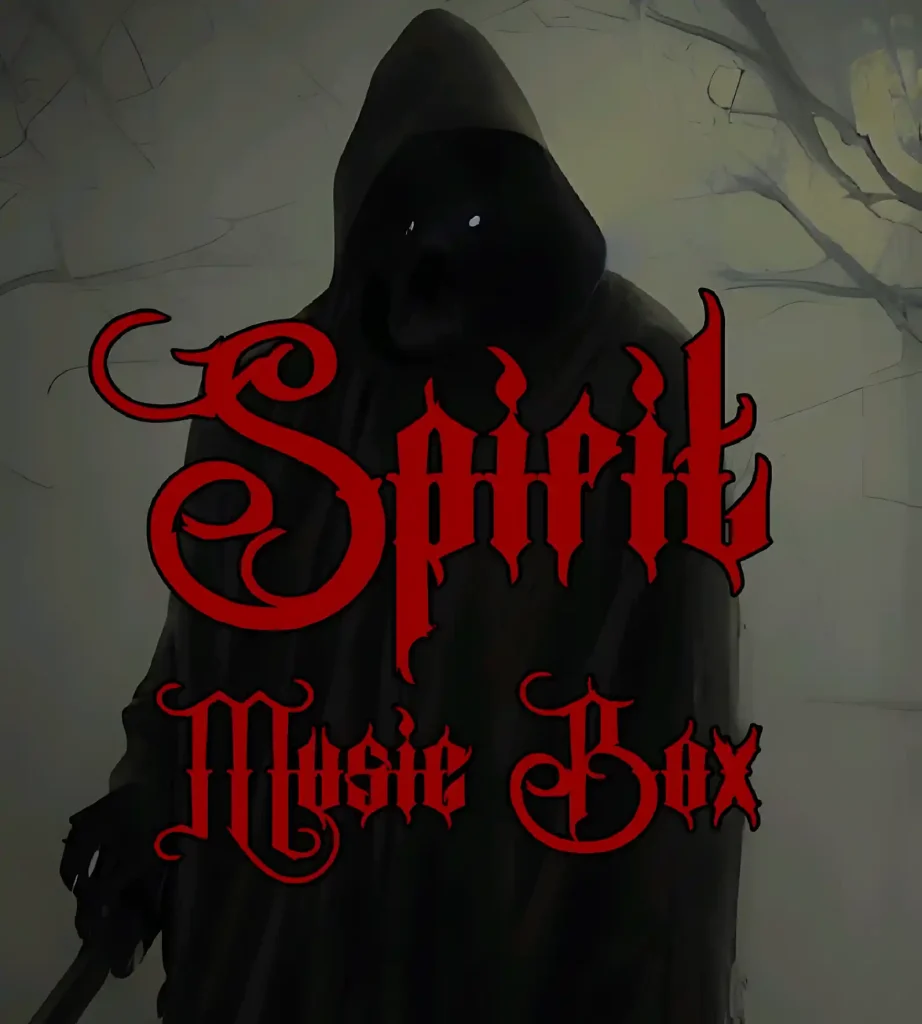The new Spirit Music Box app comes courtesy of the developer Spotted: Ghosts, a startup dedicated to easy-access paranormal investigation tools. Hitting both Android and iOS stores this year, Spirit Music Box quickly gained buzz for supposedly leveraging a phone’s built-in sensors to detect supernatural activity through electromagnetic fluctuations, vibrations, temperature shifts and more environmental readings.
This self-proclaimed “world’s most accurate ghost hunting app” directs users to calibrate readings in any given area, then promises eerie music box melodies will indicate ghostly presence when the sensors notice disturbances. By tapping accelerometers, gyroscopes, microphones and other technology we unwittingly carry everyday, Spotted: Ghosts believes they’ve cracked the code on portable, accessible spirit communication.
It’s bold claims for a smartphone app, but also clever repurposing of the advanced tech already in our pockets. However, as downloads rise, so do suspicions around legitimacy. Can an app truly register cold spots or EMF spikes with any degree of accuracy? Are user testimonials to be believed? For every excited ghost hunting team celebrating uncanny paranormal detections, there’s a cynical skeptic dismissing the Spirit Music Box as fake.
In this in-depth investigation, we dive into the purported functionality, scanning technical documentation and first-hand accounts for red flags. We’ll parse the fact from fiction – does the development history and sensor usage stand up to scrutiny? Could normal environmental readings fool naive users? Or might the Spirit Music Box genuinely pioneer profound ghost-tech breakthroughs on inexpensive platforms?
Either way, the ripples from this app promise to impact paranormal research and open new debates on smartphone capabilities. Stay with us as we turn a critical eye on this would-be game-changer.
Understanding the Spirit Music Box App Key Claims
According to Spotted Ghosts and user guides, the Spirit Music Box taps into almost all available sensors within modern smartphones to detect paranormal activity.
It claims to register fluctuations in electromagnetic frequencies using the magnetometer. Tiny vibrations get picked up via accelerometer and gyroscope readings. The light sensor monitors environments for unexplained dims or bright spots.

Even proximity, air pressure, humidity and temperature changes supposedly get utilized as evidence of ghostly presences manipulating surroundings based on cold spots and other documented phenomena.
Instructions have users first calibrate baseline readings in a given area without expected activity. Threshold levels for each sensor get set accordingly as the control benchmark.
From there, the Spirit Music Box monitors for deviations from baseline benchmarks. Cross-referencing readings across sensors, it identifies environmental disruptions aligning with potential supernatural encounters.
When the algorithms detect correlating spikes, drops or other technical triggers indicating possible apparitions, the eerie music box sound effects activate like an alarm ringing out evidence something strange manifested during observation.
Customization settings allow toggling specific sensors on or off and adjusting sensitivity preferences for what constitutes triggering thresholds per user comfort. But can it deliver as promised?
Assessing the Technical Validity
While Spotted Ghosts apps like Spirit Talker previously claimed to gather EVP voices or other audio-based phenomena, the Spirit Music Box represents a shift towards leveraging complex sensor data instead.
So in terms of capability, yes – the accelerometer, gyroscope, magnetometer and other built-in smartphone sensors it promises to utilize do technically exist to measure environmental readings.
However, reasonable doubt persists around whether these sensors can actually register supernatural disturbances rather than normal mundane fluctuations. Without established studies confirming ghosts reliably manipulate EM fields, temperature or motion patterns, baseline readings get tricky.

If the app mainly activates due to arbitrary sensor triggers and serves to generate stimulating “evidence” via well-timed sound effects, it risks being entertainment technology masquerading under false pretenses.
Yet if Spotted Ghosts found innovative algorithms for the Spirit Music Box to cross-reference sensor data in ways identifying truly unnatural patterns beyond expected variations, it may point to pioneering techniques.
User testimonials run the gamut from profound paranormal encounters to frustrated random music box blares. Credibility hinges on whether genuine phenomena manifest consistently when scrutinizing direct sensor readings rather than anecdotal perceptions alone.
Let’s dig into documented use cases and attempt to replicate results using impartial data analysis. The truth awaits somewhere in the EM frequency readings.
Investigating the Developer of Spirit Music Box App
As pioneers in the paranormal app space for over 15 years, Spotted Ghosts comes with more legitimacy than anonymous creators or fly-by-night companies. However, details remain scant on the actual human developers behind the apps.
Searches yield no verified backgrounds, technical credentials, affiliation with research institutions or documented ghost hunting field work predating their apps for anyone definitively linked to Spotted Ghosts.
This lack of public-facing information raises accountability concerns and greater fraud risk without external oversight. However, the ongoing depth of their app portfolio also makes outright dismissal unwise.
Analysis into previous Spotted Ghosts apps exposes similar patterns as found in the Spirit Music Box – incredible claims around leveraging phone sensors and recordings to enable spirit communication, but little transparency on testing or data gathering methodologies.
While Spirit Talker and Spectre Box lean more into psychological auditory tricks over technical readings, the illusion of functionality takes precedence over substantiated documentation regarding the developer’s credentials or research.
Ultimately, enthusiasm for ghost hunting without rigor or credentials needn’t totally undermine innovation. But extraordinary claims require extraordinary evidence – which the secretive and selective findings Spotted Ghosts publishes fail to fully provide. Getting to the truth means unraveling those secrets.

Context from Related Apps Like Spirit Music Box
The Spirit Music Box enters a crowded field of paranormal apps making similarly extraordinary claims about enabling contact with ghosts. Comparing features and developer practices offers wider context.
Other apps like this have come and gone lets think back to Randonautica.
Apps like Ghost Radar promise to use smartphone sensors to measure disturbances, but skeptics view their cinematic representations of nearby “spirits” as entertainment illusion built on randomness.
However, believers argue that confirmation bias alone can’t explain compelling first-hand encounters with these apps, praising them as groundbreaking.
On the other hand, Ghost Hunter apps lean more into the appearance of scientific methodology with EMF readers and log tracking rather than flashy special effects. But without transparent testing or data analysis of readings, critics still see manipulation gimmicks disguising lack of genuine phenomena.
These examples speak to the divide that Spirit Music Box steps into – one usually shaped less by objective evidence than the eye of the beholder.
Believers praise Spotted Ghosts’ commitment to user-friendly spirit tech, assuming best intentions. Skeptical onlookers demand clearer data before accepting extraordinary claims about smartphone capabilities. Both will claim validation from the same app experience.
Getting past this requires scrutinizing Spirit Music Box readings on purely technical merits rather than subjective paranormal encounters that defy easy replication. If real phenomena manifest in the sensors, personal experiences thereafter gain credence.

Evidence Leans Towards A Fake App
After analyzing functionality claims, developer background, and capabilities compared to similar apps, red flags persist around legitimizing the Spirit Music Box as a paranormal detection breakthrough.
As a proprietary app by a secretive business rather than open-source research project inviting public scrutiny, motive questions arise. Without visibility into coding or allowing peer reviews, what the app actually does under the hood remains unclear.
If revolutionary sensor-based algorithms genuinely identified signatures of ghosts, why withhold open testing? Instead, the pattern of ambiguity and dramatic multimedia effects aligns closer with crafting stimulus for confirmation bias than substantiating technology.
Lack of documented methodologies around baseline trials, positive detections or data gathering point more towards capitalizing on the paranormal app niche rather than pioneering developments.
While true believers will insist the app produced real spirit encounters for them personally, anecdotes make poor evidence compared to impartial, transparent analysis that Spotted Ghost perpetually avoids.
Unless credible third-party vetting can conclusively validate Spirit Music Box principles working as advertised, this oversight should raise ethical red flags around misleading vulnerable enthusiasts ultimately left with just another unreliable ghost hunting novelty.
Let’s press for integrity and honesty around claims instead of letting developers hide behind secrecy or calls for open-mindedness. Extraordinary claims demand extraordinary proof – which remains sorely lacking here.
Exercise Caution with The Spirit Music Box
The Spirit Music Box app by Spotted Ghosts intrigues through creative repurposing of smartphone sensors for paranormal hunting on accessible platforms. However, without transparency on methodologies or data, the developers invite reasonable doubt.
For an app claiming to leverage complex technical readings, lack of open testing raises accountability concerns and allows more room for manipulation gimmicks to create convincing illusions.
While true believers will have experiences seemingly confirming the app’s capabilities, personal anecdotes make poor evidence within ghost hunting fields already prone to subjectivity and confirmation biases. Responsible innovation should empower users through education – not secrecy.
The potential exists for apps like Spirit Music Box to pioneer real breakthroughs validating supernatural phenomena and detection via ubiquitous devices. But the onus lies with creators to substantiate such extraordinary claims beyond just cinematic effects.
Users should carefully weigh credibility gaps before full endorsement. Demand higher standards moving forward, and let’s build open-mindedness on facts – not blind leaps towards alluring possibilities devoid of evidence. Progress lies in asking tough questions. Where developers fall short, users must pick up the slack until we get real answers.
Resources:
Google Play Store (Android)
Apple Store (iPhone)


I tried this app, it could be real!